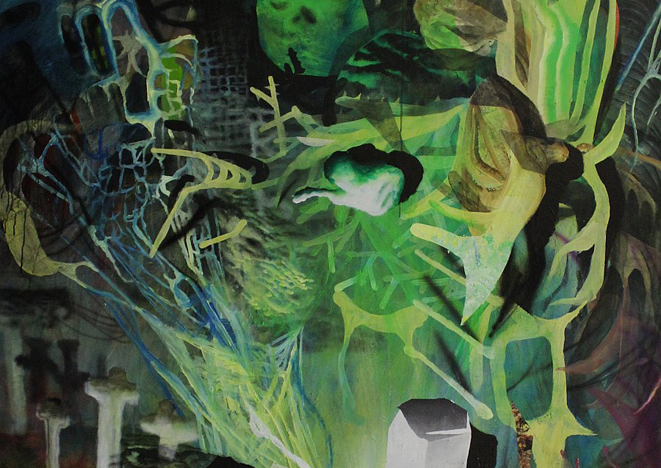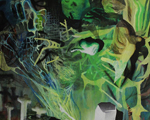H
e chose the darkest part for us
between the campsite and communal fire.
Said this was just the place to teach us
night vision, which he’d perfected
as a Reservist in the jungles
of Florida, a simulated drop
behind enemy lines in ’Nam,
where survival depended on following
the footfalls of shy, nocturnal beasts.
Or picking out the metal catch
of a mine in the shuddering moonlight—
which, in these New England woods,
he translated into spreading roots
—splayed—tendons of hands—
across the paths. The sniper’s mark
was a spinner’s web at temple level.
Our task was to set our sight
on the sightless part,
then wait for the pupils’ dilation,
trusting the way to reveal itself
out of the barked periphery.
For some time, we stumbled—
horses riding into blinders.
The path we pretended to see
was only his voice, which we followed
through red oaks, scuffing
our boots on swaybacked stones.
When it happened, it was exactly
like looking through a stereogram,
the snow-white static of this
perceived world falling away,
the trails of badger and deer,
litter-drag of porcupines, the retreat
made implicit to the un-learned eye.
Years later, I’m at the sudden funeral
of his wife. He wears his grief
like a new shirt, self-consciously,
and I suppose there isn’t any other way.
I’m one of the scrupulous mourners
who wait for him to cross the mortuary lot.
That is when I notice
his slant-faced approach.
He is not-looking for the way,
trying night vision in broad day. I watch
him watch the static fall away.
Listen:
Feature image by Julius Hofmann. Courtesy of the artist
Click on the image to enlarge.


